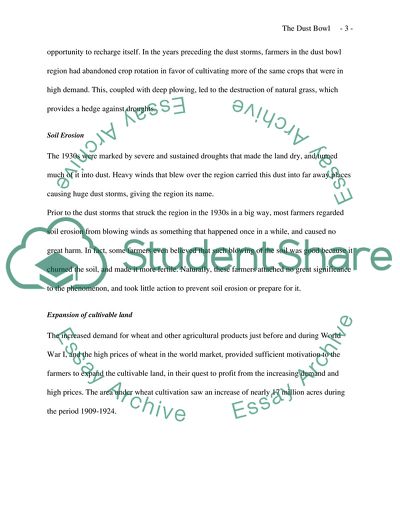Cite this document
(The Dust Bowl Term Paper Example | Topics and Well Written Essays - 1750 words, n.d.)
The Dust Bowl Term Paper Example | Topics and Well Written Essays - 1750 words. https://studentshare.org/environmental-studies/1716630-the-dust-bowl
The Dust Bowl Term Paper Example | Topics and Well Written Essays - 1750 words. https://studentshare.org/environmental-studies/1716630-the-dust-bowl
(The Dust Bowl Term Paper Example | Topics and Well Written Essays - 1750 Words)
The Dust Bowl Term Paper Example | Topics and Well Written Essays - 1750 Words. https://studentshare.org/environmental-studies/1716630-the-dust-bowl.
The Dust Bowl Term Paper Example | Topics and Well Written Essays - 1750 Words. https://studentshare.org/environmental-studies/1716630-the-dust-bowl.
“The Dust Bowl Term Paper Example | Topics and Well Written Essays - 1750 Words”. https://studentshare.org/environmental-studies/1716630-the-dust-bowl.


